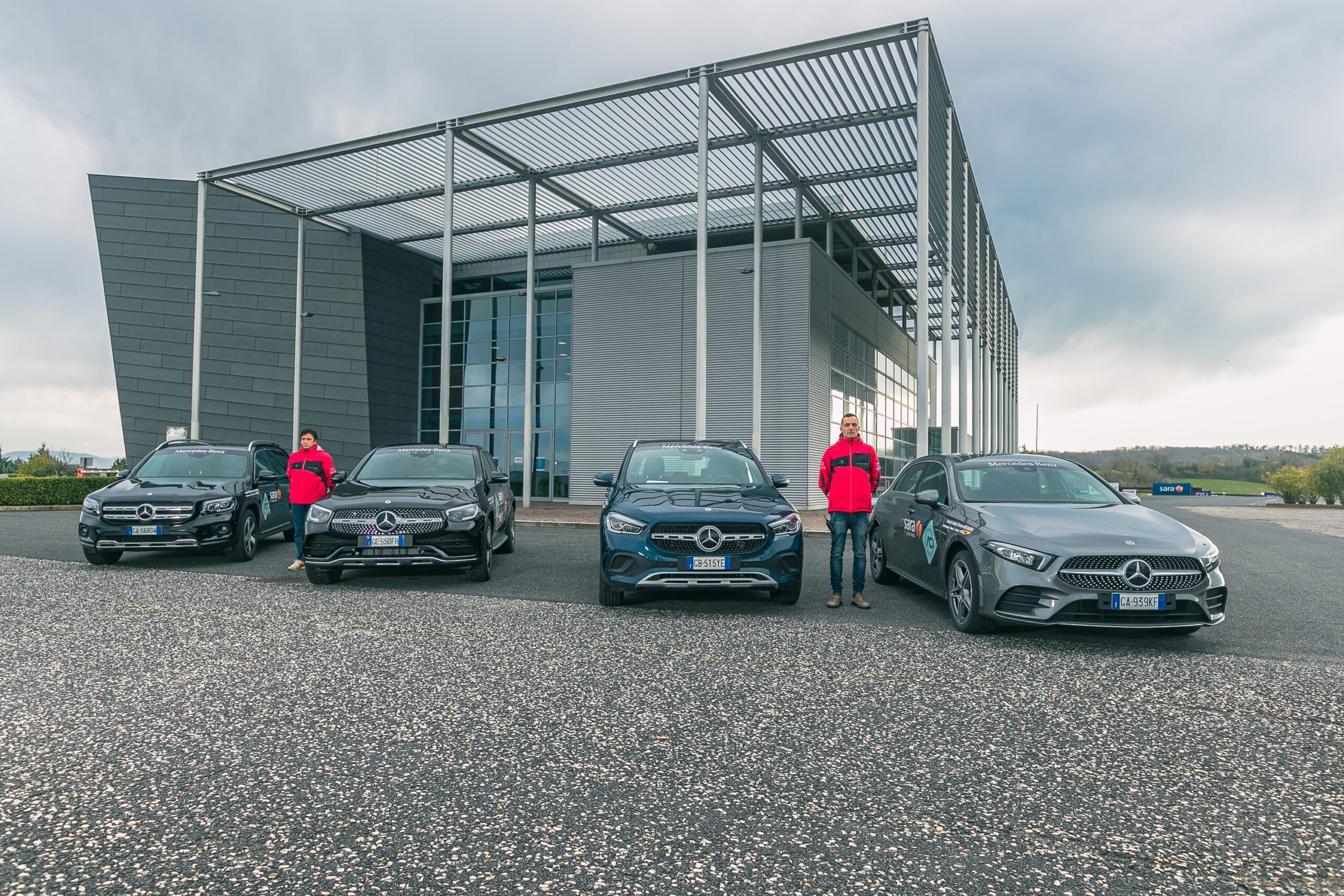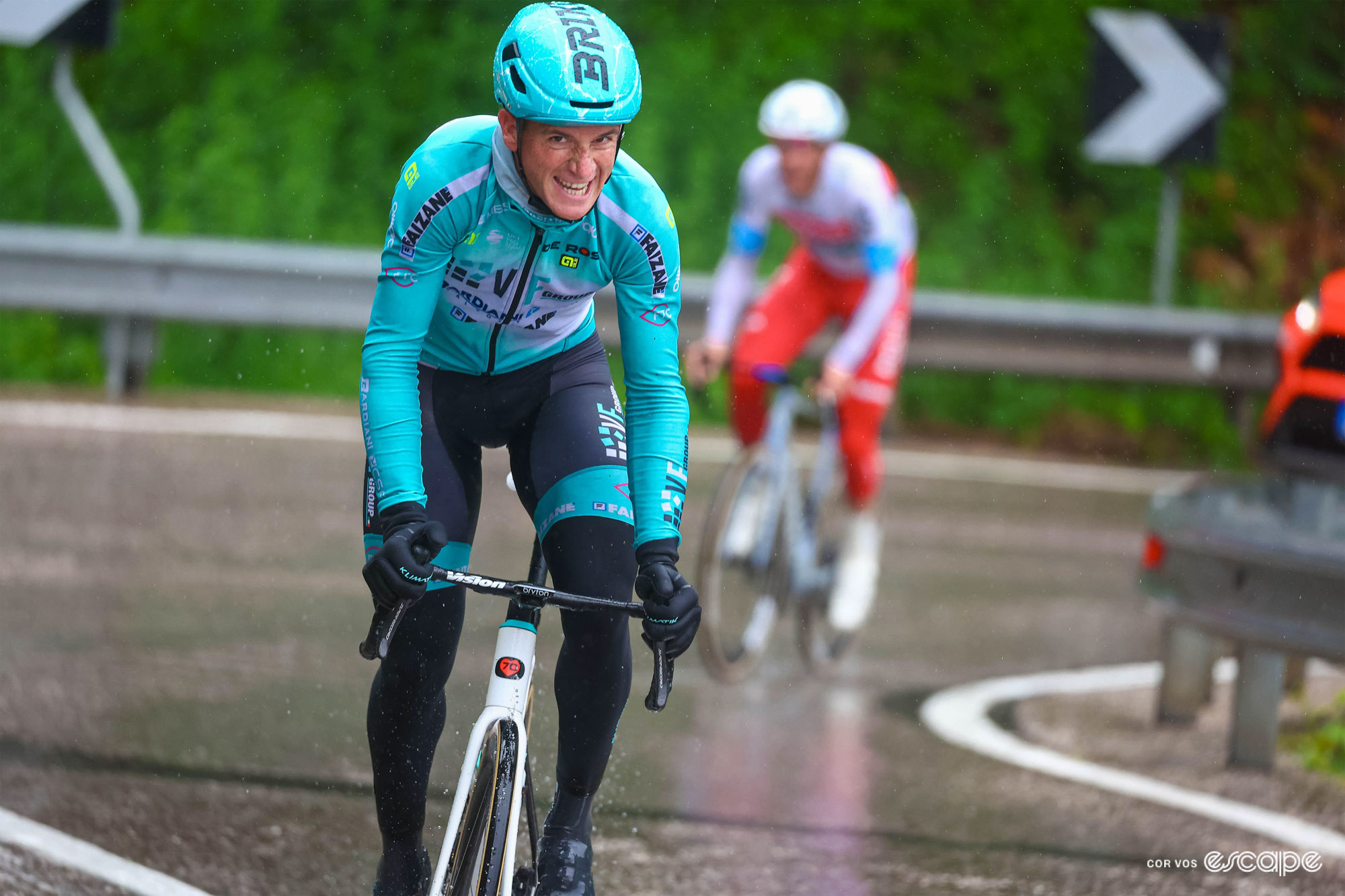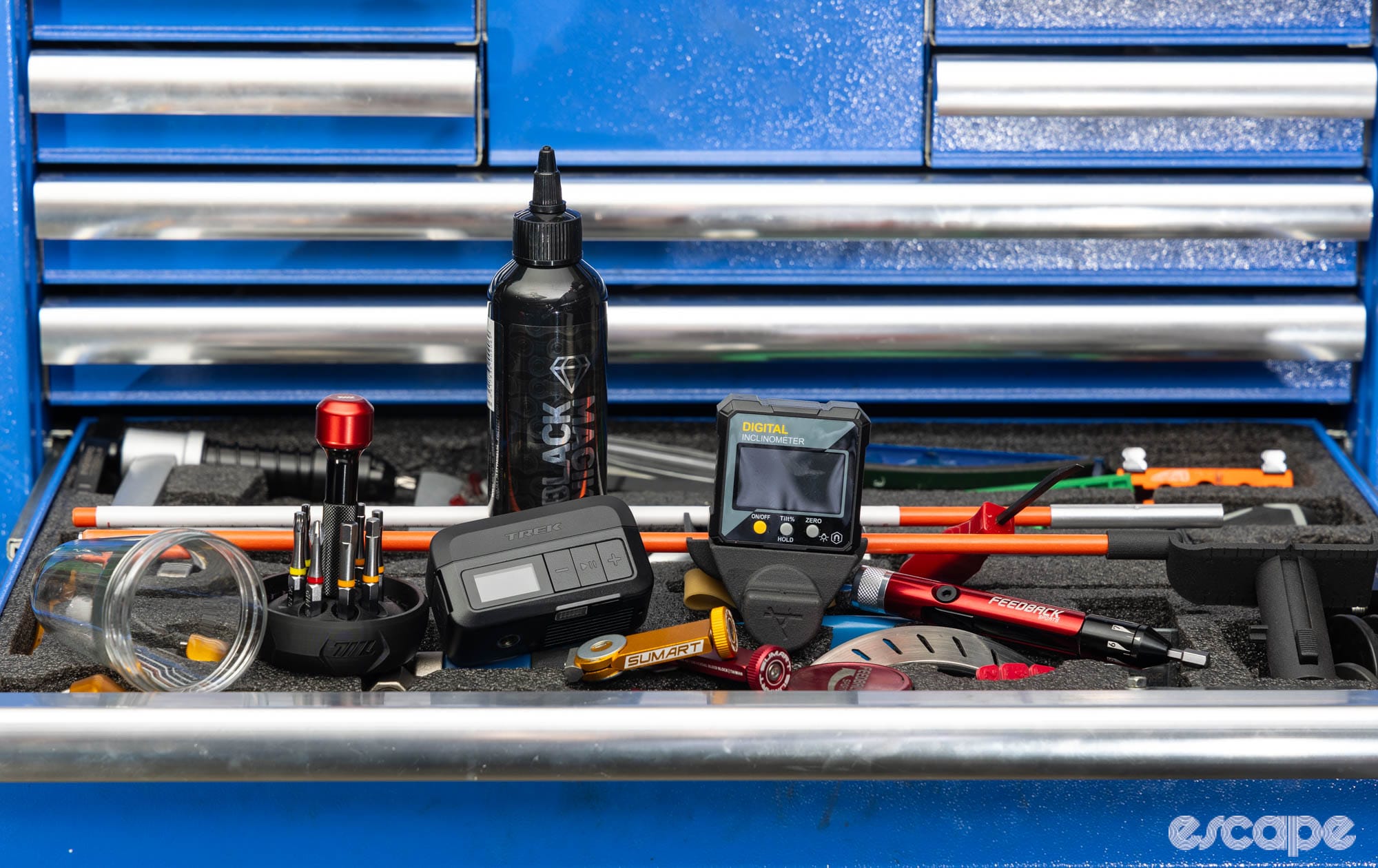Compared with many professional sports, the spoils in cycling are relatively modest. For Tadej Pogačar’s marauding victory at the Giro d’Italia, he’s taken home around €430,000 – that’s factoring in the overall title and his six stage wins over the three weeks, as well as the KOM classification and his numerous other placings, and is the lion’s share of a total prize-pool of €1.6 million. Now compare that with, say, the French Open: €2.4 million for the winner alone, both men’s and women’s, and more than €53 m total.
So if the Giro’s money is fine but not great, are there more tangible prizes to be taken from this bike race? Happily, yes! The example that most has our attention is the Intergiro classification – newly-reintroduced after a near-20 year hiatus. This classification, which is not awarded with a special jersey but a coloured number, is confusingly similar to a combativity prize, but with points issued at fairly random intervals on each stage. That means that it favours an aggressive rider that’s keen on a breakaway – and at the Giro d’Italia there are no riders more keen on a breakaway than those from Italian ProTeams.
Fittingly, then, the honours went to Filippo Fiorelli of VF Group–Bardiani–CSF–Faizanè. But he didn’t just win €7,000 for his efforts: he also won a safe driving course, courtesy of the presenting partner of the Intergiro, the insurance company Sara Assicurazione.

There is something about this prize that really tickled me, so when I first heard about it – the day before the Giro began – I wanted to know more, especially seeing as everywhere that referred to the 'safe driving course' just referred to it in those three words with no further elaboration. But the devil's always in the details. What does the course include? Does it have a monetary value? Is it mandatory for the winner? What if the winner lives really, really far away? These were just some of the questions that I wanted the answers to, and I sent them in an email to the Giro’s organisers; no response.
So I bade my time, sending off a follow-up email on stage 4. Again, no response. Or on stage 17. Or stage 21. If I hadn’t previously received a helpful email from the Giro’s media team, I’d be wondering whether this was an unstaffed email address, with tangential questions about a bike race hurled into a digital void. Or was there a more troubling reality? Was the safe driving course vapourware? Does Sara Assicurazione even exist? Why was everyone keeping this thing so close to their chest? Did they, maybe, realise that a safe driving course was a darkly funny prize to give to a cyclist, a category of athlete so often the victims of unsafe driving?
By the end of stage 21, Fiorelli had the Intergiro classification in the bag, finishing a healthy margin clear of Julian Alaphilippe. Huge moment! Time to send another email off, this time to his team. Some of the questions contained within: “Is Filippo excited to learn how to drive safely, and is he passionate about driving a car? Do you think he will actually use this prize, or does he have better things to do with his time?”
Again, no response. No clues* about this safe driving course on the Sara Assicurazione website (*that I could find via Google Translate). I sent a sixth and final email off to try to find out more, and – just when I was prepared to give up on this story entirely – got a response from Sara itself containing a link to a third party website with Just So Much Information about the safe driving course.
And now, it was finally possible to put myself in Filippo Fiorelli’s shoes: as a redheaded Italian based in San Marino, who would have to (safely) drive for four hours to either the Milan or Rome facility to take a full-day course in safe driving, valued at €396.

Here’s what I learnt: there are five courses on offer, from beginner to advanced car drivers, for microcars and for motorbikes and for heavy vehicles. Let’s assume based on his Instagram that Fiorelli is an advanced driver, capable of shredding his way around a race track in one of the provided vehicles and ready to “learn behavior that puts the value of safety first while respecting the environment in which we live.” At 8.30am on a day of his choosing, our man will arrive at the track and head into the classroom. There, he will sit through scintillating lessons on the following:
- Dynamic control systems (what they are, how they work, what they are for).
- Driving settings and use of restraint systems
- Braking and steering techniques.
- Causes and types of accidents
- The concept of safety and risk reduction
- Alterations in the driver's psycho-physical state
At around lunchtime, Fiorelli's psycho-physical state will start diminishing, so there will be a one-hour lunch break. He will return to the class energised after a succulent piadina or whatever, and hop behind the wheel. There he will practically apply:
- Driving position and steering techniques
- Emergency braking and obstacle avoidance
- Under/oversteer and Curve setting
- Skid control.
- PRACTICAL MODULE: tires (markings, characteristics, controls) and new aid systems. [ed: the capital letters really sell this bit for me]
And then he will go home again.

Now, while all of that sounds pretty boring, there are some tantalising signs that it isn’t going to be as much of a snooze of a day as it appears at first. The organisation’s website goes out of its way to point out “the thrill of driving safely” with a little video, pointing out that you will “reach your limits, know your medium, learn to react, control critical situations”, before tauntingly asking: “you didn’t think a safe driving course was so exciting?” They’re right: we didn’t. But now we do! Filippo Fiorelli, you are in for a very thrilling, very safe time! All those weeks of emptying yourself on the roads of the Giro have not been for nothing. Have fun with your sensible prize that will set you up for a lifetime of conscientious motoring!
Did we do a good job with this story?





